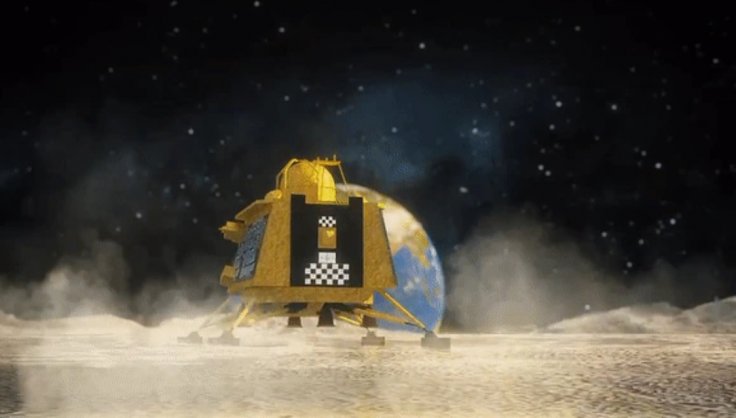India’s resilient lunar rover, Chandrayaan-3, has achieved a major milestone by becoming the first to identify chemical elements on the moon’s south pole. Chandrayaan 3’s Pragyan rover has identified the presence of sulphur in the lunar soil, a discovery that holds the potential to unveil more insights into the origins of our celestial neighbor, the moon.
This discovery marks a pioneering achievement as it’s the first time that sulphur has been traced on the moon’s south pole “in situ” – meaning it was identified in the location where it naturally exists, rather than being sensed from a distance by an orbiter, Indian Space Research Organisation (ISRO) confirmed.
Chandrayaan Achieves Major Milestone
In addition to sulphur, Chandrayaan-3 has successfully detected various other elements such as aluminum, calcium, iron, chromium, titanium, manganese, silicon, and oxygen. The search for hydrogen is currently in progress.
Chandrayaan-3 has been stationed on the moon for a week now, after accomplishing a successful landing on August 23, which generated widespread excitement and jubilation in India.
ISRO shared the news of the element detection on X (previously known as Twitter).
This achievement was made possible by the rover’s employment of ‘Laser-Induced Breakdown Spectroscopy’ (LIBS), a compact instrument designed to assess the concentrations of elements within solid, liquid, or gaseous samples.
“The Laser-Induced Breakdown Spectroscopy (LIBS) instrument onboard Chandrayaan-3 Rover has made the first-ever in-situ measurements on the elemental composition of the lunar surface near the south pole,” ISRO said in the post.
“These in-situ measurements confirm the presence of sulphur in the region unambiguously, something that was not feasible by the instruments onboard the orbiters.”

The discovery made by the rover has “really important implications” for both researchers and astronauts, Sara Russell, a professor of planetary sciences at the Natural History Museum in London, told MailOnline.
“Sulphur is usually bonded to important metals like iron and nickel, and these may be important ores that could be used by future astronauts to enable them to live and work on the moon,” she told the outlet.
“We already know that the moon contains sulphur, from our analyses of rocks returned from the moon by space missions, and from lunar meteorites.
“What we don’t really know is the distribution and abundance of sulphur on the moon.
“This has really important implications for understanding the way the moon evolved.
“For example how much sulphur was lost when the moon first formed in a giant impact, and today how do the different rock layers of the moon differ in composition?”
Chandrayaan 3 Continues to Explore Moon
Over the past week, ISRO has been consistently sharing updates on the progress of its Chandrayaan-3 mission through their Twitter account.

Chandrayaan-3 is composed of both a stationary lander with elongated legs, nicknamed ‘Vikram’, and a rover equipped with wheels, known as ‘Pragyan’.
The rover was carried to the moon onboard the lander. Shortly after the landing, which occurred in a relatively flat area between the Manzinus C and Simpelius N craters, the rover was released from its parent craft and started its exploration.
The rover has since been transmitting captivating images of the lunar southern region, over 200,000 miles away from Earth.

One particularly striking image, shared by ISRO on X on Monday, shows a sizable crater with a diameter of 13 feet (4 meters) positioned directly ahead of the rover, obstructing its path.
The presence of this substantial trench is noteworthy because had the rover not identified it, there was a possibility of it falling into the crater and being tipped over, thereby prematurely ending its mission.
Fortunately, the rover was commanded to backtrack and has now been rerouted onto a new course, as reported by ISRO.
In another captivating photograph, captured by the rover and shared on X on Wednesday, the Vikram parent lander is seen against the backdrop of rugged lunar terrain.
Over the past week, India has garnered global attention with its Chandrayaan-3 mission. However, the mission is already approximately halfway through its timeline.

The scientific instruments on both the lander and the rover are designed to remain operational for the duration of just one lunar day, which is equivalent to 14 Earth days. This comparatively brief mission period indicates that after this timeframe, the rover and lander will cease functioning on the moon, marking the end of the mission.
Following the mission’s completion, the instruments of Chandrayaan-3 will ultimately be covered by lunar dust. While this suggests an end to their operational life on the moon, there remains a possibility that future manned missions to the moon might retrieve and repurpose these instruments for reuse.







